Mauritania Flag Meaning
A green field with yellow crescent and star, bordered by red stripes at top and bottom, representing Mauritania's Islamic identity, the Sahara Desert, and the blood of those who defended the nation.
- Continent
- Africa
- Adopted
- 2017
- Ratio
- 2:3
- Colors
- green, yellow, red
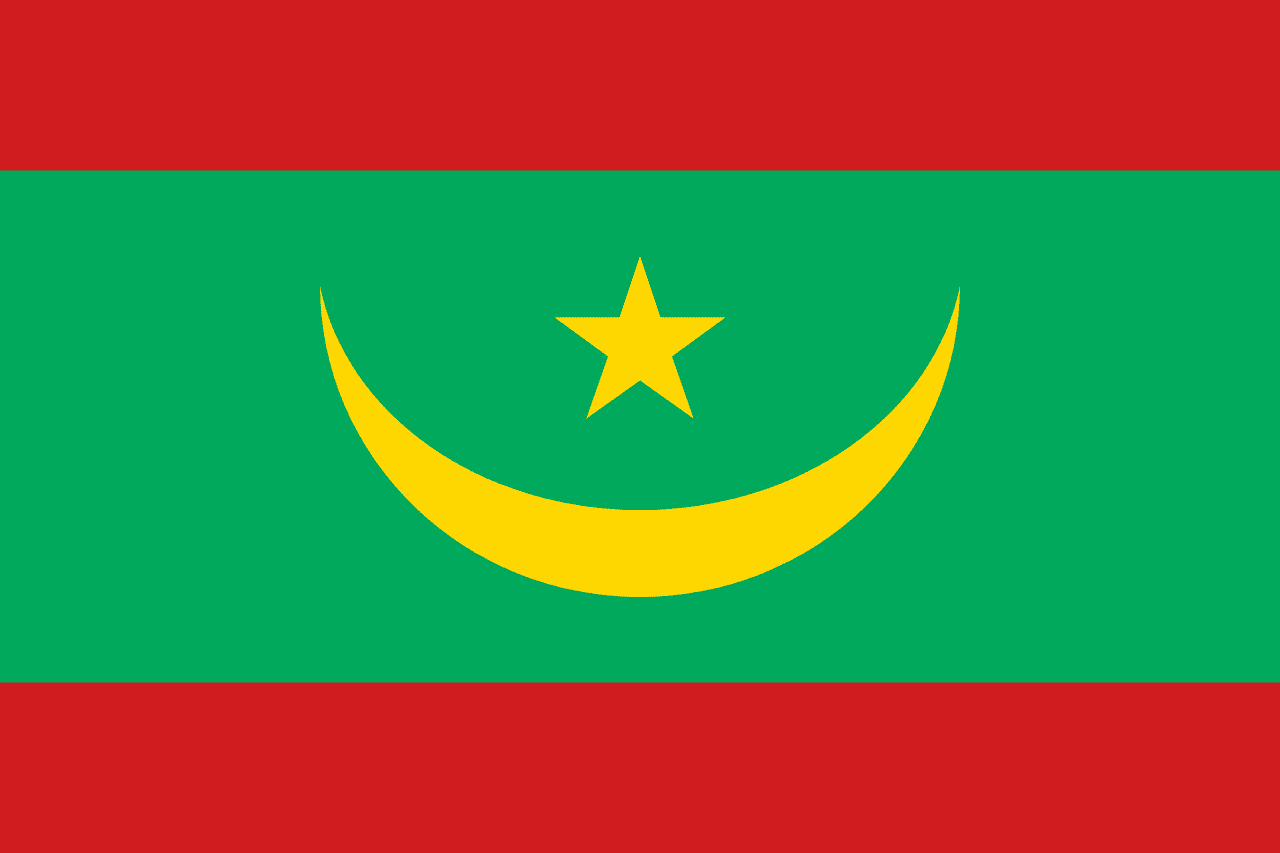
Symbolism
Green Field: Represents Islam, the state religion of Mauritania, and symbolizes hope, prosperity, and the traditional color of Islam. Also represents the few fertile areas and oases in this largely desert nation.
Yellow Crescent: Symbolizes Islam and the new moon, representing the Islamic faith that unites the diverse tribes and ethnic groups of Mauritania. The crescent also represents progress and the bright future of the nation.
Yellow Five-Pointed Star: Represents the five pillars of Islam and serves as a guiding light for the faithful. The star also symbolizes the unity of the Mauritanian people under Islamic principles.
Red Stripes: Added in 2017, the red stripes at the top and bottom represent the blood shed by Mauritanians defending their country and the sacrifices made for independence and national sovereignty.
Desert Symbolism: The overall design reflects Mauritania's identity as a bridge between the Maghreb (North Africa) and Sub-Saharan Africa, with the vast Sahara Desert covering most of the country's territory.
History
- Ancient Times: The region was inhabited by Berber peoples and later saw the spread of Islam in the 7th-8th centuries, establishing the religious foundation that would influence the future flag design.
- 1960: Mauritania gained independence from France on November 28, adopting a flag with a green field, yellow crescent, and yellow star, becoming one of the last French colonies in Africa to achieve independence.
- 1960-2017: For 57 years, Mauritania used the original green flag with yellow crescent and star, representing one of the simplest and most recognizable designs in Africa and the Arab world.
- 1978-2008: Through various military coups and political transitions, the flag remained a constant symbol of national identity despite frequent changes in government and political instability.
- 2009-2017: Under democratic government, discussions began about modifying national symbols to better reflect Mauritania's struggles and sacrifices for independence and sovereignty.
- August 15, 2017: President Mohamed Ould Abdel Aziz signed a constitutional amendment adding red stripes to the flag, making Mauritania one of the few countries to modify its flag in the 21st century.
- 2017-Present: The modified flag represents modern Mauritania's commitment to honoring its defenders while maintaining its Islamic identity and desert heritage.
Trivia
- Mauritania was one of the last countries in the world to officially abolish slavery, doing so in 1981, though the practice persisted unofficially for decades afterward.
- The 2017 flag modification made Mauritania one of only a handful of countries to change their flag design in the 21st century, showing the living nature of national symbols.
- Mauritania's name comes from the ancient Berber kingdom of Mauretania, though the modern country covers a different geographic area than the historical kingdom.
- The country is about 75% desert (Sahara), making it one of the most arid nations in the world, which the flag's design subtly reflects through its stark simplicity.
- Mauritania is geographically and culturally positioned between the Maghreb (North Africa) and West Africa, and the flag reflects this unique position in the Islamic world.
- The flag appears on Mauritanian ouguiya banknotes alongside Arabic calligraphy and images of traditional Mauritanian architecture and desert landscapes.
- Mauritania is one of the few countries where Arabic is the sole official language, and the flag represents this Arab-Islamic identity in West Africa.
- The country's capital, Nouakchott, was built in the desert specifically to serve as the capital after independence, and the flag flies over this purpose-built city.
- Mauritania withdrew from ECOWAS (Economic Community of West African States) in 2000, reflecting its orientation toward North Africa, which the flag's Islamic symbolism represents.
- The flag appears prominently during the annual Guetna Festival, celebrating the date harvest, one of the few agricultural celebrations in this largely pastoral and desert nation.
- Iron ore mining provides much of Mauritania's export revenue, and the flag flies over mining operations that are crucial to the national economy.
- The flag protocol reflects Islamic traditions, with specific rules about respectful display that align with Islamic principles regarding sacred symbols.
- Mauritanian nomadic traditions persist despite modernization, and the flag is often displayed during traditional Moorish cultural celebrations and camel festivals.
- The flag represents a country where traditional Islamic law (Sharia) forms the basis of the legal system, making it one of the few modern Islamic republics in Africa.
- Climate change discussions often feature the Mauritanian flag, as desertification and drought pose ongoing challenges to this already arid nation.
Related Countries
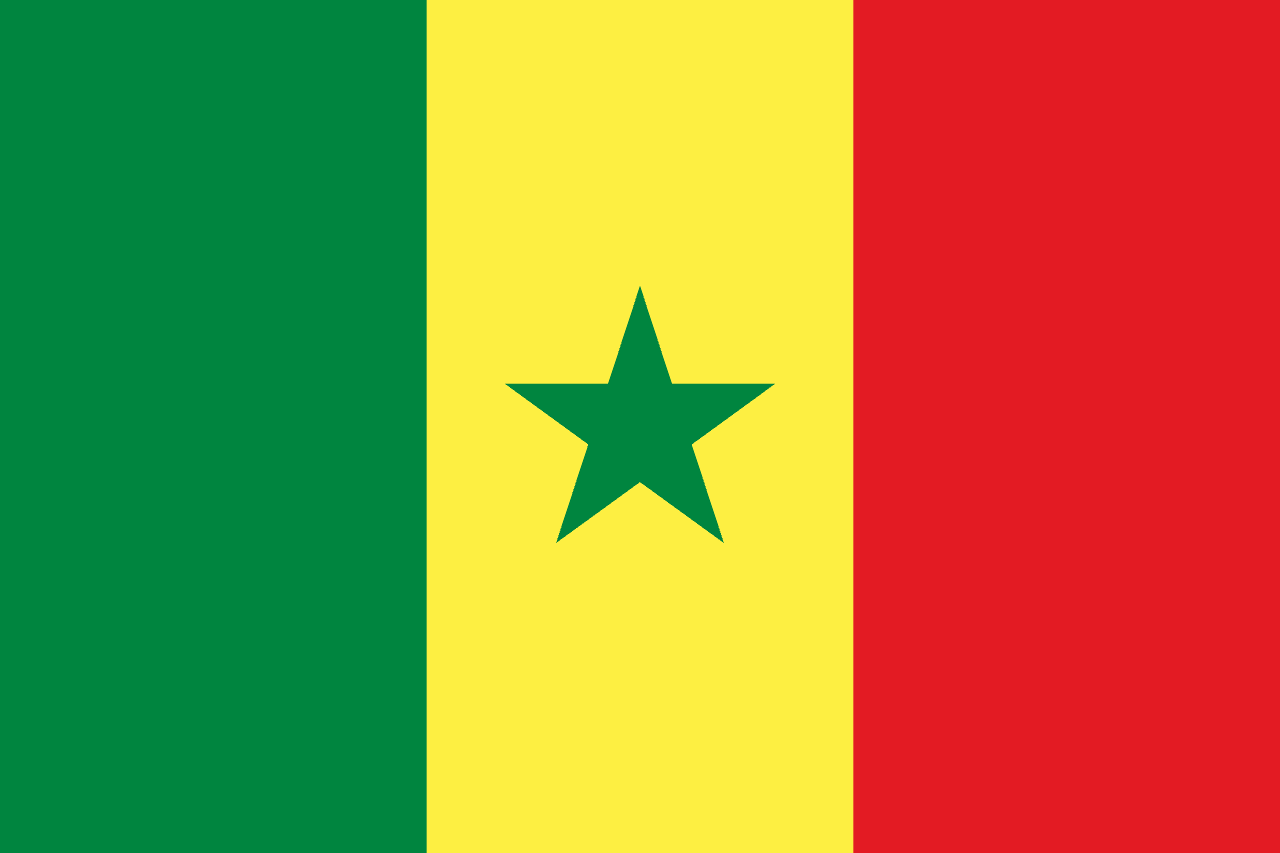
Senegal
Africa
A vertical tricolor of green, yellow, and red with a green five-pointed star centered in the yellow band. The flag reflects Pan-African identity and national unity.
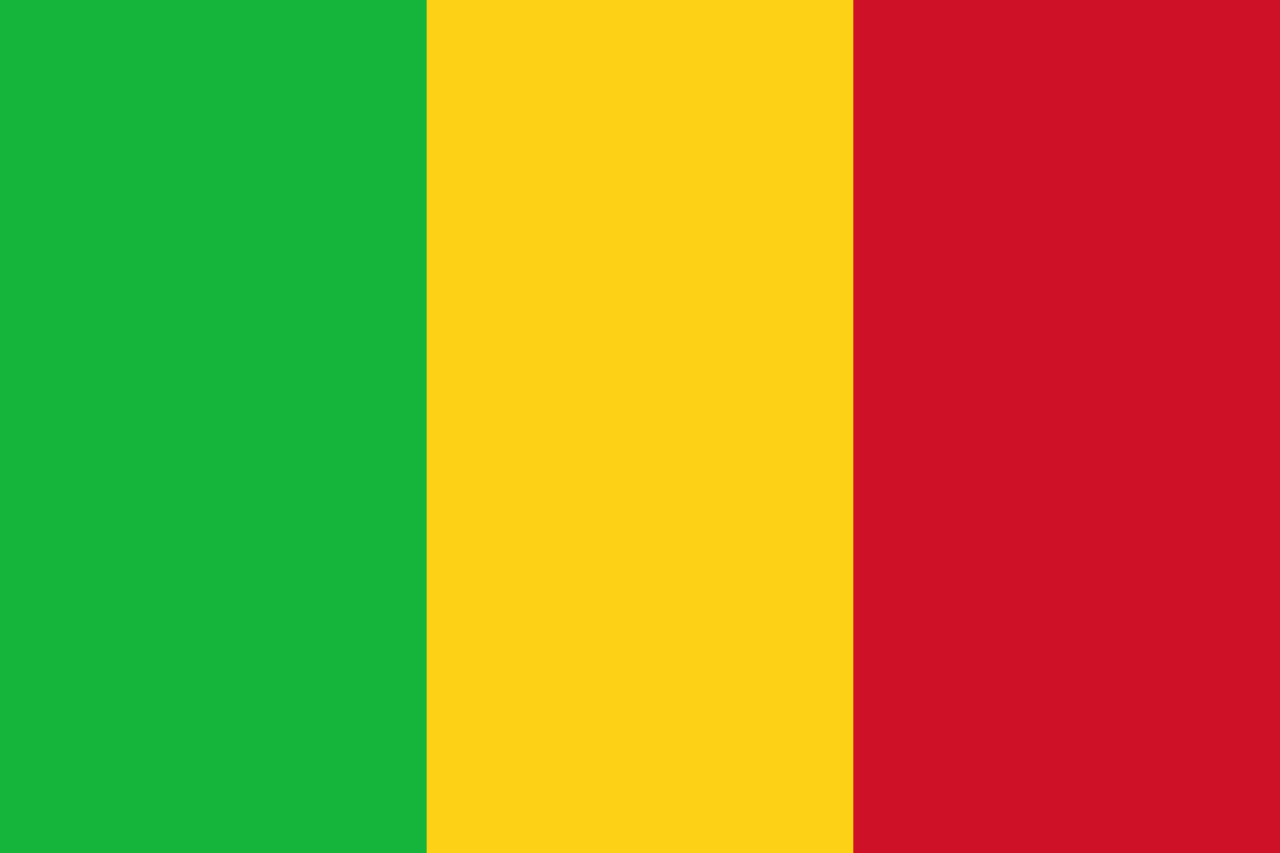
Mali
Africa
Three vertical stripes of green, yellow, and red representing Mali's agricultural potential, mineral wealth, and the blood of independence fighters, connecting modern Mali to both Pan-African ideals and its legacy as home to medieval Africa's greatest empires.
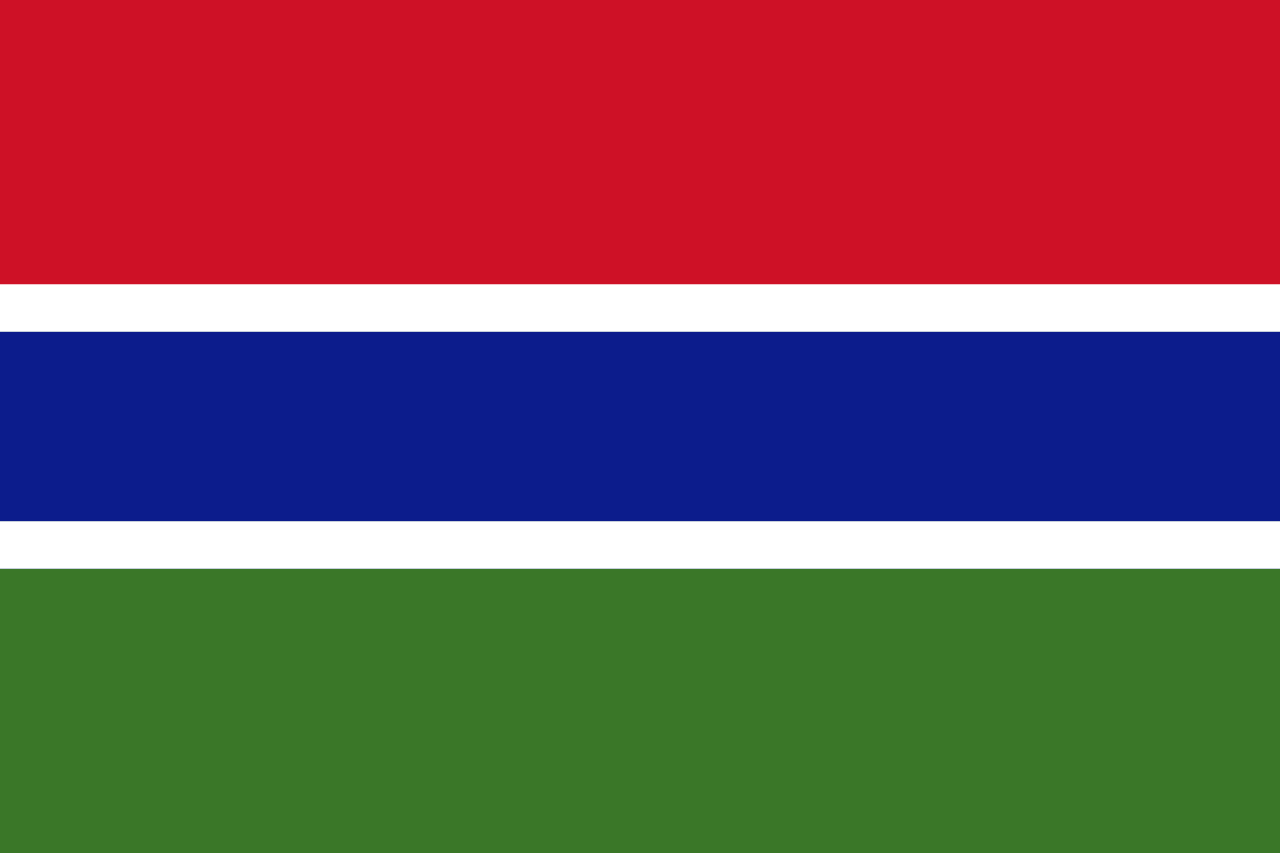
Gambia
Africa
Three horizontal stripes of red, blue, and green separated by thin white stripes, representing the sun, the Gambia River, agriculture, and peace, symbolizing the natural beauty and harmony of the smallest mainland African nation.
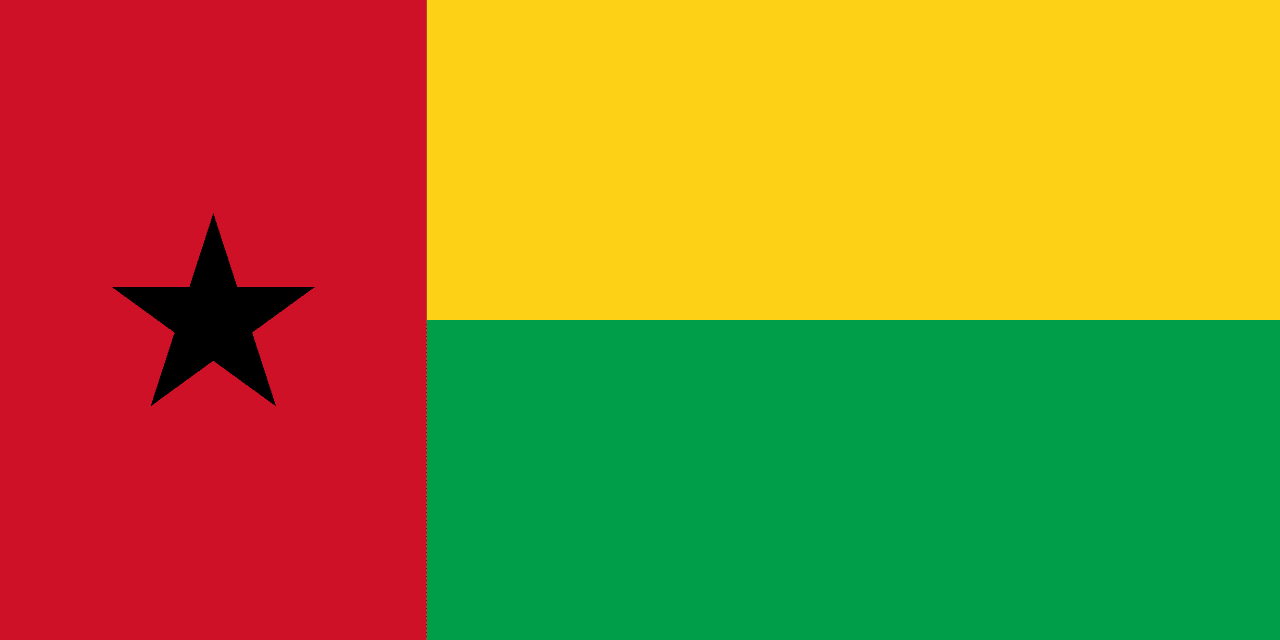
Guinea-Bissau
Africa
A vertical red stripe at the hoist with a black five-pointed star, and two horizontal stripes of yellow over green on the fly side, representing the liberation struggle, unity, hope, and the agricultural wealth of Guinea-Bissau.
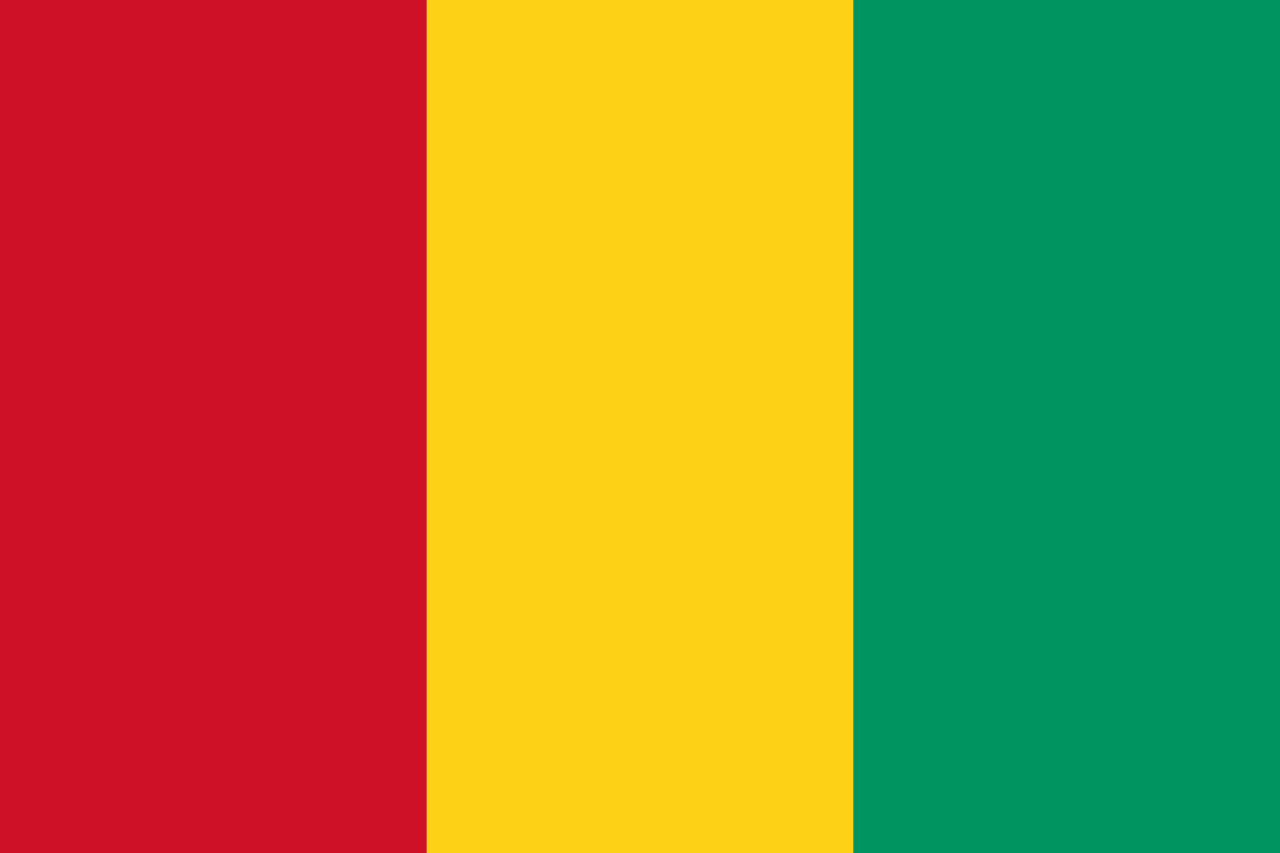
Guinea
Africa
Three equal vertical stripes of red, yellow, and green representing the Pan-African colors, with red symbolizing sacrifice, yellow representing the sun and mineral wealth, and green representing the country's vegetation and agriculture.

Morocco
Africa
A red field with a green interlaced pentagram (Seal of Solomon) in the center. The flag reflects Morocco’s dynastic traditions and Islamic heritage.